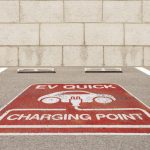With the predicted migration from diesel models to alternative vehicle types on the horizon, Neil Pattemore explains why car owners not only need to have confidence in their vehicles, but also faith in the ability of your business to handle them.
By now we’re all aware of the fallout that ensued after VW admitted its emissions ‘defeat device’ scandal. But one major question that remains is what will happen next? In circumstances where customers lose faith in a product they’ll frequently vote with their feet and go somewhere else. But in the case of diesel engine vehicles, just where will that lead them?

The question is one of confidence, but this is a surprisingly wide issue when you start to look at the fall-out of the VW scandal. Obviously VW itself has suffered some significant changes in the way that it’s viewed by customers, with some taking a class-action law suit for compensation, together with substantial losses in the volumes of new car sales, both in Europe and (especially) the US.
When the fingers started to point beyond VW, the first to be accused were the type approval authorities for the vehicles involved. However, this quickly became a difficult problem, as the laboratory tests appeared to be acceptable, but any further in-service testing didn’t appear to have been conducted as required. The ‘cosy’ relationship between the type approval authorities and their main customers (the VMs) had led to a certain reluctance to pursue some of the contentious issues and potentially upset their customer base.
A major poser was just who else may be guilty of using such defeat devices, with testing of other VMs’ products hastily conducted to check if a wider issue existed. Some of this testing is on-going, but those test results that have already been published appear to show a wide variation across other VMs, with some appearing to be very close to the emission requirements, whilst others are well above the emission limits.
The next step was to ask how the legislators, both nationally and at the European level, didn’t know about the issue and, if they did, why nothing had been done. This created a substantial level of embarrassment at the Commission which struggled to provide any confidence-inspiring answers. So positive action was required to address the VW emission problem, but when the talks got going it became obvious that the problem was much wider and (apparently) not so easy to resolve without potentially harming the European automotive industry.
Neil Pattemore has worked for over 40 years in the automotive aftermarket, with a CV that includes job roles for parts distributors and manufacturers as well as vehicle test equipment manufacturers at a senior level, both in the UK and internationally. Neil now works mainly in Brussels with the European institutions to defend the rights of independent repairers throughout Europe to access vehicle repair and maintenance information.
In the end the answer was eventually negotiated as a two-step enforcement, but with much higher levels of NOx than originally required in the Euro 6 Regulations – twice the limit until 2021 and then 1.5 times the limit thereafter. Hardly inspiring confidence in the power of the legislator (unlike across the Atlantic, where non-compliance means the vehicle type approval being revoked) to enforce the emission limits, but in an effort to regain some of its lost credibility, the Commission has imposed a change to the type approval process to prevent any direct commercial link between VMs and the vehicle type approval authorities, as well as requiring random direct driving emission data for in-service vehicles.
Only time will tell if these proposals will really make the difference needed to restore confidence in the ability of legislators to enforce their own Regulations.
Emissions testing
This then leads on to how emissions will be tested in roadworthiness (MOT) tests. For Euro 6 vehicles, they’ll be able to be checked using the OBD system, but as this system is designed and implemented by the VMs to allow them to test their own vehicles using thresholds well above the type approval requirements, this is unlikely to create a high level of confidence that vehicles really continue to comply with the in-service emission levels.
Consumer confidence has certainly not been helped by the fact that the Government’s guidance to ‘go greener’ by buying a diesel vehicle to reduce the CO₂, whilst also being told by the VMs that buying a Euro 6 diesel was a sure way of ensuring the cleanest exhaust emission levels (as was very successfully done by VW in the US), appears now to be somewhat misleading claims from both sides.
So where does all of this leave the consumer?
The answer is that they’ll probably be led towards safer and more environmentally friendly solutions that are either petrol hybrid or fully electric vehicles – as illustrated by the surge in sales of electric vehicles. Around the UK, there is already a significant increase in the numbers of ‘plug-in places’, with over 800 charging stations in the West Mids alone.
But how do independent workshops exploit this new market opportunity?
Firstly, they’ll need to realise that they’ll have to change to match these new requirements, such is the need to invest in both training and new equipment to be able to conduct even the most basic service and maintenance tasks on electric vehicles.
“Around the UK, there is already a significant increase in the numbers of ‘plug-in-places’, with over 800 charging stations in the West Midlands alone.”
A good starting point is to conduct some market research into your local area. Not everywhere will have electric vehicles, especially those areas which are more rural, but in larger centres of population the numbers are rapidly increasing. It’s highly critical that technicians are both competent and qualified to handle the risks associated with these vehicles. They utilise high energy storage systems so you should always ensure that the work area around the vehicle is cordoned off, that the battery is isolated (check the actual voltage is really disconnected) and that the technician working on the car has the keys of the vehicle (including any battery isolation device) directly under their control to stop someone inadvertently re-energising the vehicle.
As a business manager, the workshop owner has a direct responsibility to ensure the competence of the technician, together with appropriate health and safety measures. Perhaps bizarrely, all types of electric vehicles (new vehicle type approvals from September 2009 and all new vehicles from 1st January 2011) are covered under the European Euro 5 legislation (even if they don’t emit any exhaust emissions!), providing independent garages with the rights of access to all the repair and maintenance information needed.
Equipment and parts
You’ll also need to invest in some dedicated equipment to handle testing and charging, together with the handling and transportation of key vehicle components (batteries, electric motors etc.), so talk to both your equipment and parts suppliers to see how they can help.










